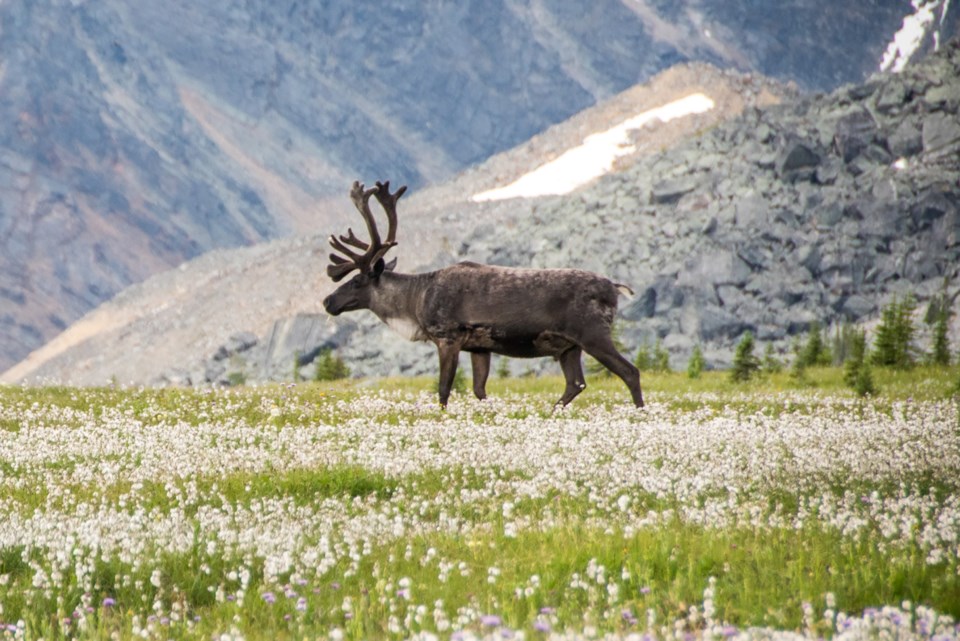JASPER – The federal government has approved a captive breeding program to save at-risk caribou herds in Jasper National Park.
The goal of the conservation breeding program is to rebuild dwindling southern mountain caribou numbers in what is known as the Banff-Jasper population unit that are simply too small to recover on their own.
In the Feb. 27 approval announcement, Environment and Climate Change Minister Steven Guilbeault, who is also the minister responsible for Parks Canada, said next steps include construction of a breeding facility and further collaboration with Indigenous partners and other federal and provincial partners.
“Every child in Canada can recognize a caribou from the iconic image engraved on our 25-cent coins,” he said in a news release.
“Preserving this species is an important aspect of our shared cultural and natural heritage in Canada.”
The remaining five animals in Banff National Park were wiped out in an avalanche near Molar Creek north of Lake Louise in April 2009.
Jasper’s Maligne herd persisted for almost 15 years with fewer than 10 animals but was extirpated, meaning locally extinct, in 2018 when the last animal was believed killed by a wolverine.
The precarious Tonquin herd, which has 45-55 caribou, and Brazeau caribou herd with fewer than 15 animals, are at risk of disappearing too.
The number of breeding female caribou is now so small – an estimated nine in the Tonquin and less than three in the Brazeau – that these caribou will not produce enough calves each year to grow the herds. Small herds are especially vulnerable to predators, disease, and accidents like avalanches.
The goal is to form a conservation breeding program by capturing a small number of wild caribou from regional herds with the closest genetic and behavioural match, and to bring them to live in a facility to be built near Athabasca Falls. The first priority is rebuilding the Tonquin herd, with a plan to bring caribou from the Brazeau herd, which is considered functionally extirpated, into captivity.
If everything goes according to Parks Canada’s plan, construction of the breeding facility would start this spring. The first capture is planned for 2025, while the second capture and the first release would be in 2026.
The modelling shows that if 12 to 15 female caribou are released every year, the Tonquin caribou herd could grow to more than 200 animals within five to 10 years.
More than 800 caribou ranged throughout the mountain national parks 25 years ago.



